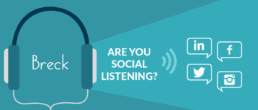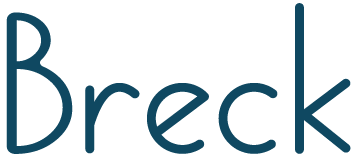
Practicing Social Listening in Times of Social Distancing
We’re all more than familiar with the term “social distancing” these days as we each individually play our parts in preventing the spread of the coronavirus in our communities. But even as customers and stakeholders take a step back from in-person engagement, businesses, non-governmental organizations (NGOs), and government agencies have an unprecedented challenge and opportunity to engage with audiences online. A New York Times article from early April showed that Americans have been spending more time online, flocking most sharply to streaming services and work-from-home platforms, like Zoom, Microsoft Teams, and Google Classroom. But with more time on our hands and a need to connect virtually, audiences are also relying on social media platforms to find creative ways to stay connected.
With online communication more important than ever, brands are presented with an opportunity to promote a practice in addition to social distancing: social listening.
What is Social Listening?
In the same way we do a choreographed dance around another person to maintain that six feet when we pass them on the sidewalk, social listening requires both assessment and response. According to Hootsuite, social listening is a crucial component of audience and industry research, allowing brands to track, analyze, and respond to conversations on social media. Social listening involves monitoring social media channels for mentions of your brand or related content, as well as taking action in response to those analyses. It is a strategy that can help form future campaigns, improve content and messaging, determine competition, identify brand influencers, keep track of your brand’s growth, increase customer acquisition, and discover new opportunities. Clearly a lot of benefits!
Take a small business starting out in the clothing industry, for example. The company notices that customers are mentioning loungewear more often due to the shift to remote work. The company responds accordingly by launching its next season’s campaign featuring loungewear entirely. In another instance, the company notices industry trends pushing toward more environmentally sustainable clothing. The company engages with customers who post approval of certain products, but vocalize a wish for the clothing’s material to be made from organic or ethical sources. With these industry and customer analyses informing business strategy, the company makes a decision to move toward using entirely recycled materials. Social listening finds the trends that matter most and helps shape long-term strategy by listening to customer needs and wants.
Social listening also proves equally useful in promoting a government agency’s mission and reach among constituents. Imagine a severe hurricane hits a small coastal town. During this moment of crisis communications and management, disaster relief agencies at state, local, and federal levels can use social media platforms to monitor what local officials and residents are reporting on the ground. Social listening can help determine what constituents need in the moment of a crisis, as well as how constituents perceive your agency’s programs as a whole. By seeking out and listening to conversations, government agencies can put their finger on the pulse of their programs’ efficacy and tailor or adapt accordingly.
What are the Benefits?
If you aren’t already convinced to start practicing social listening in your business strategy, Sprout Social has compiled quantitative data that points to the importance of online customer engagement. According to the Sprout Social Index, 83% of respondents like when brands respond to questions, 68% like when brands join conversations, and 48% of customers make a purchase with a brand who is responsive to customers.
Listening isn’t just the nice and respectful thing to do, it is strategic. Listening to customers or stakeholders and engaging with them—the process of assessing and responding—can be an essential tool in navigating the current waters of entirely remote, virtual user engagement.
Everyone likes to be heard and we all value the people in our lives who listen to us. But good listening requires more than just nodding along; it involves cultivating active and thoughtful responses to the other person’s needs. Social listening requires the same kind of attentiveness, but directed toward customers and stakeholders. By listening, analyzing, and responding to the social media climate, you will be on your way to elevating your brand to the next level.
